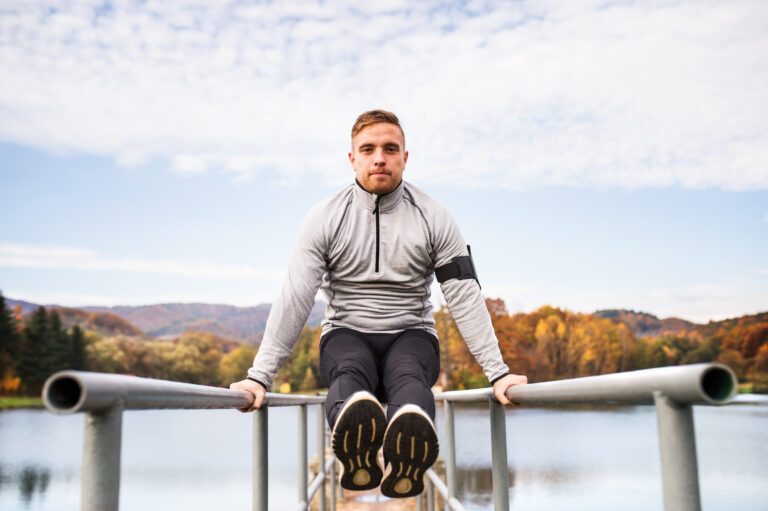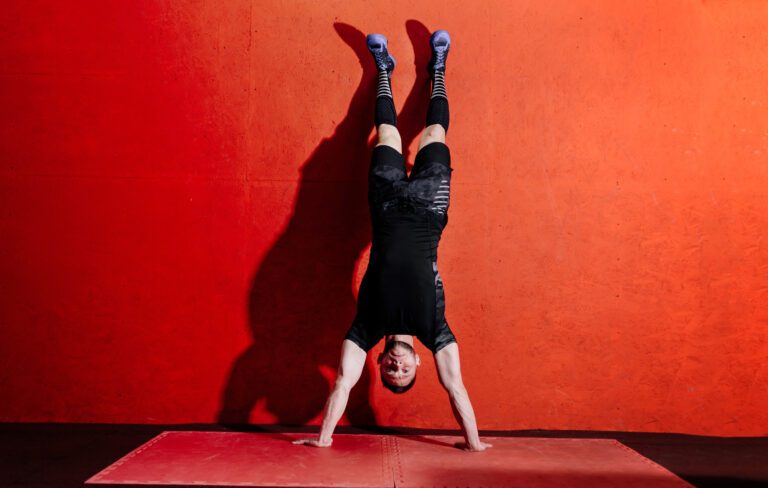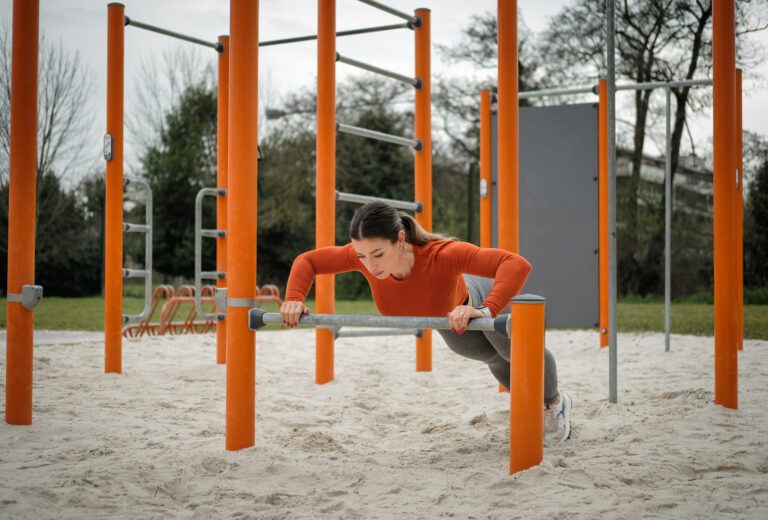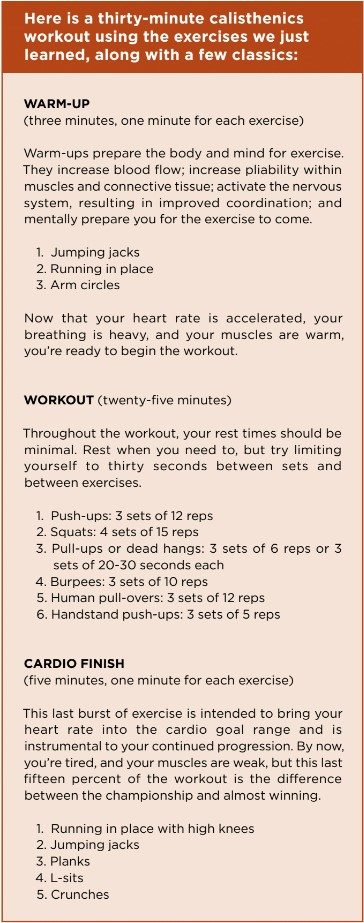The Call to Calisthenics
By Ali Othman, NSCA - CPT®
CALISTHENICS IS A DYNAMIC AND empowering exercise that uses your body weight to develop a combination of strength, endurance, flexibility, and coordination. Anyone looking for a versatile bodyweight-centric workout can benefit from calisthenics. Whether you’re new to exercise or a seasoned athlete, you can adapt the calisthenic exercises and concepts to fit any skill level. The fact that it doesn’t require much equipment or space makes calisthenics an anytime and anyplace routine.
Calisthenics has its roots in continuous progression. With every session, you push a little further towards your goals. Compound movements promote body awareness and add to the functional value of incorporating calisthenics into your fitness routine. Calisthenics will help you burn calories and build lean muscle mass, which leads to fat-burning and weight loss. So, unless your primary exercise goal is to add significant muscle mass or strength, calisthenics can help you redefine your perception of fitness and grace.
Starting a calisthenics routine begins with a conversation with your physician. After being cleared for this type of exercise, you’re ready to integrate the fundamentals into your workout. Push-ups, bodyweight squats, and pull-ups—or dead-hangs for those unable to perform a pull-up—will establish the foundation for developing physical strength. Jumping jacks, burpees, and other active recovery exercises will keep your heart rate in the necessary range and build endurance and stamina. Once you are comfortable with these basic movements, begin adding exercises such as dips, lunges, planks, L-sits, and other core-building exercises to help with balance and body awareness.
Exploring the endless list of calisthenic exercises can be part of your routine. Here are five popular options:
Calisthenics will help you burn calories and build lean muscle mass, which leads to fat-burning and weight loss.
Dead Hang
Grab onto a pull-up bar with your hands slightly wider than shoulder-width and palms facing away from your body. Use a stool or jump up to grab hold of the bar. With your legs hanging straight and your feet flat and parallel to the ground, squeeze your core muscles for the duration of the hang. Hang steadily for thirty to sixty seconds or as long as you can. Be sure to progress to pull-ups as hanging becomes easier.
L-sit
Sit on the ground with your legs extended in front of you and your palms flat on the ground below your shoulders. Squeeze your stomach muscles, push your feet together, and point your toes to keep your whole body in position. Push your hands down against the ground and continue squeezing your stomach to hold your feet up as you lift yourself into the air. Keep your shoulders from shrugging and work your way up to three sets of thirty seconds.

Burpees
Burpees are one of the best ways to kick your heart rate into second gear. Stand with your feet shoulder-width apart, squat in a controlled motion, and gently place your palms on the ground in front of you. Transfer your weight from your feet to your hands, kick your feet back so you’re in the push-up position, and you guessed it: perform a push-up. At the top of the push-up, kick your feet forward, transfer your weight back to your feet, and power into a jump reaching for the sky.
Human Pull-Over
Lay on your back with your arms behind your head, holding onto something stable like a bar. While gripping the bar, curl your lower body upward and off the ground by pulling your arms in a downward motion, keeping your body tight, and using your back muscles to perform the movement. Slowly lower your lower body to the ground and repeat the movement without letting your feet hit the ground.
Handstand Push-Up
Face a sturdy wall and place your hands on the ground shoulder-width apart about nine inches from the wall. Kick your legs up into a handstand position with your heels lightly touching the wall for balance. Keep a slight bend in your elbows, tighten your core, keep tight throughout the entire exercise, and slowly lower yourself as far as you are comfortable, then push back up into the starting position.
The ultimate decision between making calisthenics your primary focus or incorporating the exercises and concepts into other routines goes back to your fitness goals and exercise preferences. Variability within exercise is always positive as long as the different types of exercise lead you toward a unified goal.



Ali Othman is an NSCA-certified personal trainer with over fifteen years of experience in the health and wellness industry. He is passionate about giving people the tools to live a healthier and better-informed tomorrow.